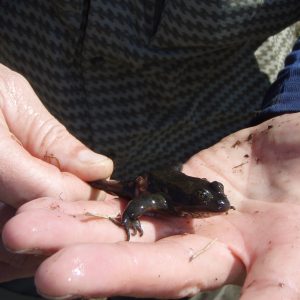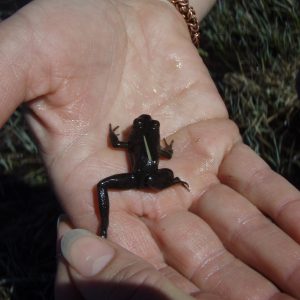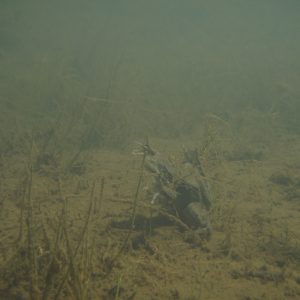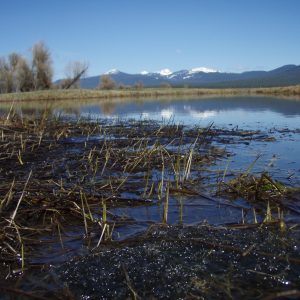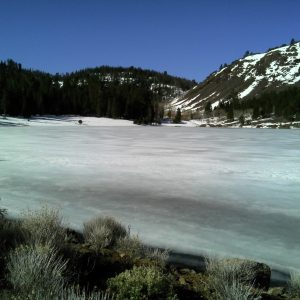You might think amphibian surveys would take you to cool, damp, dark places. With the Oregon Spotted Frog, not so! During our first few weeks as I sat in the office, having taken on the OSF as Species Lead, I read the following as ideal survey conditions: warm, sunny days with little or no wind. Well that sounds pretty ideal indeed! While we waited for our supervisor to return from a training, we were set on some office work and whatever field trips staff undertook. When our supervisor returned, the first thing we hear is that it’s a hot, hot year and the frogs are spawning whole weeks before they’d ever spawned before (yikes!). Thus launched one crazy month of survey after survey.
Like many rare species, the OSF is quite shy and hard to find. Over the years, as surveys yielded fewer and fewer numbers of adults (my last few days of data reorganization have started to make this quite clear to me), the Klamath Falls FWS office changed survey tactics to focus more on egg mass surveys, which are far less mobile and cryptic then their originators. We had one special day this season where we saw a few adults and one subadult Oregon Spotted Frog (it was one of the warmest, sunniest days). OSF spawn when water reaches warmer temperatures in the shallows, usually around May through June/July, and the egg masses develop over 2-3 weeks. The trick is to catch the window when you can find the highest density of egg masses and get to the sites to survey, but each site window varies depending on local water temperature conditions, altitude, location, etc. As it was we caught the tail end of spawning at most sights, seeing little OSF tadpoles hatch out and occasionally get eaten by leeches. The presence of hundreds of chorus frog eggs is also a sign that we are too late.
We have been balancing local surveys around Upper Klamath Lake of known territory, with surveys of historic territory in the Modoc National Forest down in California. This was quite exciting as we have had the chance to look for OSFs where they have not been seen in the last 100 years or so, and had we caught any evidence of their existence it would have made some ripples. These surveys turned up negative in the end, but my fellow intern and I got to spend several nights camping in the Warner Mountain Wilderness, the past 3 weeks hiking into remote lakes and creeks and generally absorbing the beauty that surrounded us, including the occasional coyote spotting. Last week however we got caught in a few storms, and neither the frogs nor us were experiencing prime operating conditions!
Well, that just about wraps up OSF surveys for the year, next week will be working with several valued, yet endangered, fish species in the Klamath Basin. I can’t wait to see what comes next!
- California surveys of presumed historic habitat take us to icy lakes

